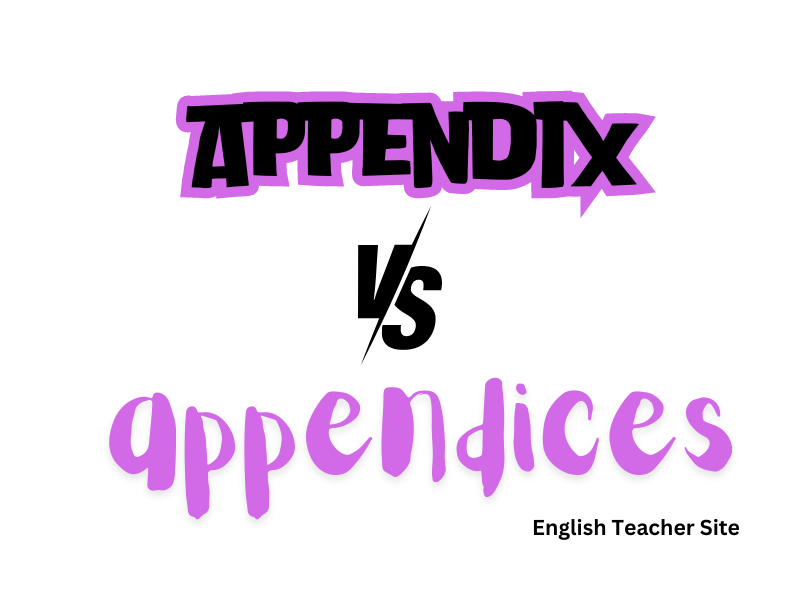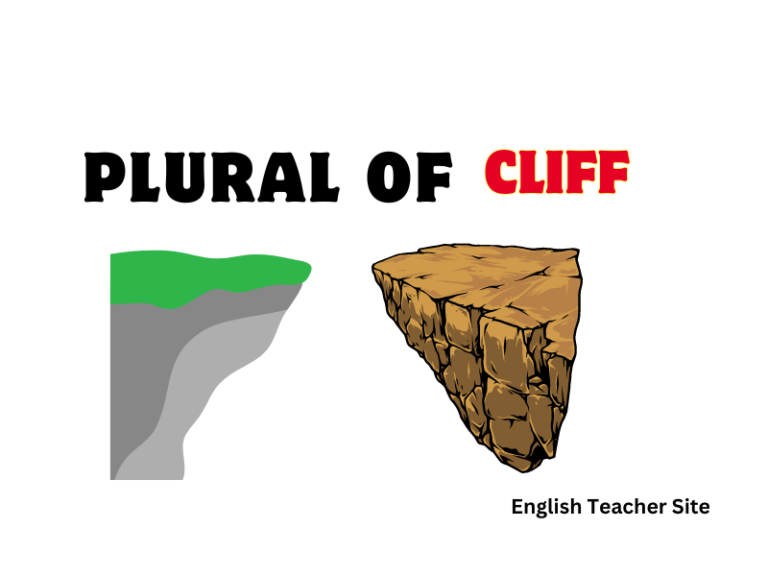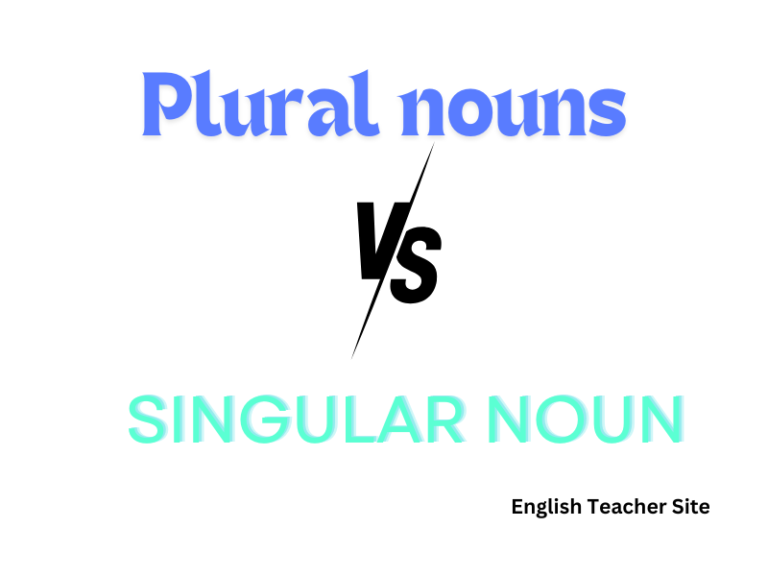What’s the Plural of Appendix: Understanding Variations in English Usage

- The plural of “appendix” is “appendices” for documents and “appendixes” for anatomy.
- Usage dictates the plural form, with “appendices” for book supplements and “appendixes” for bodily outgrowths.
- The plural forms stem from Latin, exhibiting a common noun irregularity reflective of English’s diverse linguistic influences.
The distinguishing factor lies in the word’s application. In anatomical terms, “appendixes” is the preferred plural form when speaking of multiple instances of the vermiform appendix. However, when referring to the supplementary material in written works, “appendices” is the conventionally accepted plural. Both versions of the plural stem from the Latin root, with “appendices” adhering to the classical Latin form, while “appendixes” aligns more closely with the regular English pluralization pattern.
What’s the Plural of Appendix?
Certain nouns have more than one acceptable plural form. Appendix is such a noun, showcasing a versatile application that affects its plurality. There are two widely accepted plural forms of “appendix” depending on the context in which the word is used.
Anatomical Context
In anatomical terms, “appendix” refers to the vermiform appendix, which is a tube-shaped sac attached to the lower end of the large intestine.
| Singular | Plural |
|---|---|
| Appendix | Appendixes |
The term “appendixes” is predominantly used when referring to the anatomical structure.
- Example: All twenty patients had their appendixes removed.
Scholarly Documents
When the term relates to supplementary material at the end of a book, document, or presentation, the preferred plural is appendices.
| Singular | Plural |
|---|---|
| Appendix | Appendices |
This form is employed within academic or formal writing for referring to multiple sections or additions.
- Example: The book includes three appendices covering historical references.
Usage
The choice between “appendixes” and “appendices” depends on formality and tradition. Both forms are correct, but “appendices” is often found in scholarly contexts, while “appendixes” fits better within a medical or less formal setting.
- Medical Context: Surgeons often publish studies on appendixes.
- Academic Context: Her thesis was impressive, complete with detailed appendices.
What’s the Singular of Appendix?
Anatomical Context
The term “appendix” in the anatomical sense refers to a small, tube-like sac. Here is how it is defined:
- Singular: appendix
- Plural: appendices or appendixes
| Singular Anatomy Term | Plural Forms |
|---|---|
| Appendix | Appendices / Appendixes |
Textual Context
In the context of written works, “appendix” denotes supplementary materials. Again, “appendix” is the singular form used.
- Singular: appendix
- Plural: appendices or appendixes
| Singular Textual Term | Plural Forms |
|---|---|
| Appendix | Appendices / Appendixes |
When instructing students, an English teacher may provide examples to illustrate the use of the word in a sentence:
- “The appendix at the end of the book provides additional resources.”
- “Please refer to the appendix for a detailed explanation of the data.”
To emphasize, regardless of context, the singular form remains ‘appendix,’ and when turning to the plural form, one may use either ‘appendices‘ or ‘appendixes.’ Both plurals are correct, ensuring precision in both written and spoken English.
What Does the Word Appendix Mean?
It is a noun that can refer to a section of additional material at the end of a book, document, or article. In this context, appendices provide supplementary information that is relevant but not essential to the main text.
Anatomically, the term describes a small tube-shaped sac located at the junction of the small and large intestines. This vermiform appendix plays a role in the human body that researchers are studying to fully understand, but its function is not entirely clear.
| Context | Meaning |
|---|---|
| Literary | Supplementary material at the end of a written work. |
| Anatomical | A tube-shaped sac located at the end of the large intestine. |
The word itself originates from Latin, where it means something added on, emphasizing its use in both literature and biology. Typically, in literature:
- Bibliographic references
- Raw datasets
- Explanatory notes
When discussing human anatomy, the appendix is often referred to in terms of its potential to cause medical issues, most notably appendicitis, which requires surgical removal.
Here are characteristics of the literary appendix:
| Characteristics | Description |
|---|---|
| Supplemental Nature | Not essential for the understanding of the main content. |
| Location | Found at the end of a written work. |
| Variety of Information | Contains various types of supplementary data and information. |
Other Irregular Plural Nouns (ix– and –ces/-xes Suffixes)
In English, certain nouns ending in -ix or -ex switch to -ices or -xes in the plural form, deviating from the more common -s or -es suffixes. let’s explore a few such terms to shed light on their irregular pluralization.
| Singular | Plural |
|---|---|
| Index | Indices |
| Appendix | Appendices |
When pluralizing the term index, the x is replaced with -ces to form indices, a term often used in mathematics and publishing contexts. Similarly, appendix becomes appendices, which can refer to supplementary material at the end of a book or to multiple extensions of the large intestine in an anatomical context.
The transformation of -ix and -ex to -ices and -xes does not apply uniformly to all words with these endings. Here are examples illustrating exceptions:
- Matrix: Matrices
- Vertex: Vertices
Contrastingly, some nouns ending in -ex or -ix maintain a regular pluralization pattern by merely adding -es:
| Singular | Plural |
|---|---|
| Vortex | Vortexes |
| Complex | Complexes |
Furthermore, English includes:
- Cortex: Cortices
It is important to note that while these patterns exist, they aren’t applied universally, and irregular plural nouns need to be memorized due to their exceptions to the rules.
Box and fox are common examples of -ox ending words that follow a more standardized pluralization pattern by simply adding -es to form boxes and foxes respectively. Despite sharing a similar ending with words like index or matrix, these do not adopt the -ices plural form.
Examples of the Word Appendix Used in Sentences
| Anatomy Context | Document Context |
|---|---|
| The surgeon removed her inflamed appendix. | I referred to the appendix for the survey data. |
| He read about the appendix‘s function in biology class. | The book’s appendix includes a glossary. |
| Appendix health can be vital to our well-being. | For further reading, see the appendix. |
Appendix in a sentence when referencing anatomy:
- The doctor suspected that the patient’s pain was caused by an inflamed appendix.
- Researchers are still exploring the full range of functions of the human appendix.
Appendix in a sentence when referring to supplementary material in a document or book:
- She found the illustrations in the appendix particularly helpful for understanding the text.
- The conference proceedings were detailed, with participant bios located in the appendix.
Examples of Appendices/Appendixes Used in Application
In academic writing, appendices are often employed to present extra information. Examples include:
- Raw Data: The reader is given access to the raw data that supports the research, which can be extensive.
- Detailed Methodologies: A detailed account of experimental procedures allows for proper replication.
| Application | Example Use of ‘Appendices/Appendixes’ |
|---|---|
| Academic Paper | Appendices may contain data sets or survey questions. |
| Dissertation | Appendixes often include interview transcripts. |
Additionally, in legal or policy documents, appendices might consist of:
- Supplementary Statutes: Texts of laws related to the document’s subject matter.
- Historical Documents: Original documents for reference and context.
| Document Type | Example Use of ‘Appendix/Appendices’ |
|---|---|
| Policy Manual | Appendices can cover revisions to policies. |
| Legal Brief | Appendixes may hold previous court decisions. |
In anatomical context, when referring to the bodily organ, the plural form ‘appendixes’ is commonly used:
- Surgical Texts: Discussing multiple cases of appendix removal, the term ‘appendixes’ might be used.
Synonyms for Appendix
Scholarly Context:
| Term | Use Case |
|---|---|
| Supplement | Often used to indicate extra material added to a text |
| Addendum | Refers to additional information or a late addition |
| Annex | A section appended to a document or book |
Literary Context:
| Term | Use Case |
|---|---|
| Afterword | Implies a closure or discussion following the main content |
| Epilogue | A concluding section that often reflects on the content |
| Codicil | An addition or amendment, especially to a will |
In everyday language, the terms supplement and addendum are sometimes used interchangeably, although they can have different nuances. A supplement might imply an enhancement or extension, while an addendum suggests necessary or clarifying information appended after the original document was completed.
Common usage synonyms include:
- Documentation: Supporting information or records coupled with the main material.
- Conclusion: A term used to signify the final dealings in various types of writings, but less commonly in place of “appendix”.
Origin of the Word Appendix
The term appendix has Latin roots, originating from the word appendere, meaning “to hang upon.” It serves as a descriptor for something added onto a more significant part, akin to an appendage. As the word evolved through Medieval Latin, it took the form of appendix, indicating materials added at the end of documents or books.
Latin Origins
- Appendere: To hang upon
- Medieval Latin: Appendix
Plural Forms of Appendix
Languages often adapt and create plurals based on rules intrinsic to them. For the word appendix, Latin and English have had their influences.
| Latin Origin | English Adaptation |
|---|---|
| Appendices: The proper Latin plural of appendix. | Appendixes: The Anglicized plural version. |
The pluralization takes two distinct forms, reflecting its dual heritage. One leans on its classical origin, ‘appendices,’ while the English form, ‘appendixes,’ follows a more conventional pattern of adding ‘-es.’
In the context of anatomy or literature, ‘appendices’ and ‘appendixes’ are used to refer to different items:
- Anatomical appendix: Often “appendixes.”
- Documentary appendix: Commonly “appendices.”
Sources
My name is Khamis Maiouf. I am the creator of the English Teacher Site, dedicated to providing valuable resources and insights for students around the world. With a passion for education and a commitment to helping students enhance their skills, I aim to make English teaching more effective and enjoyable for both educators and students.






